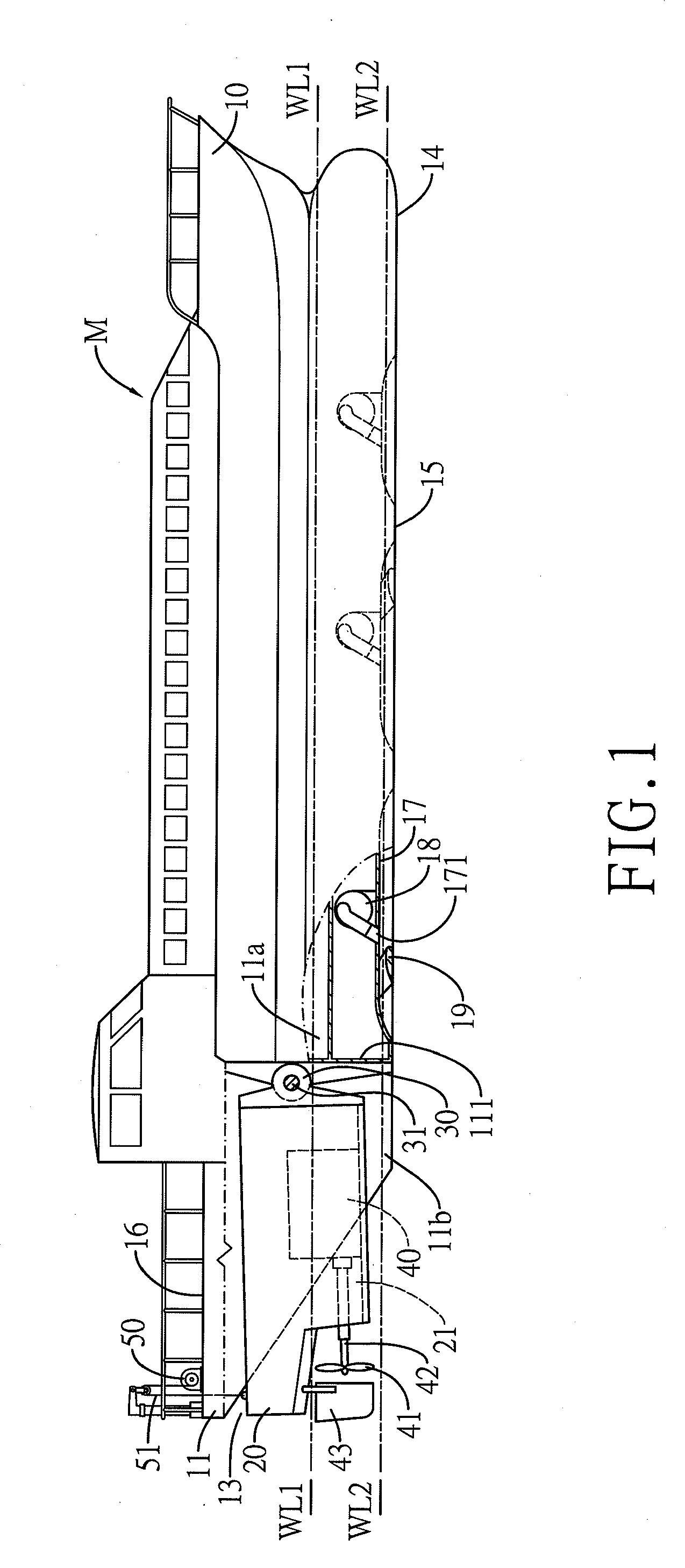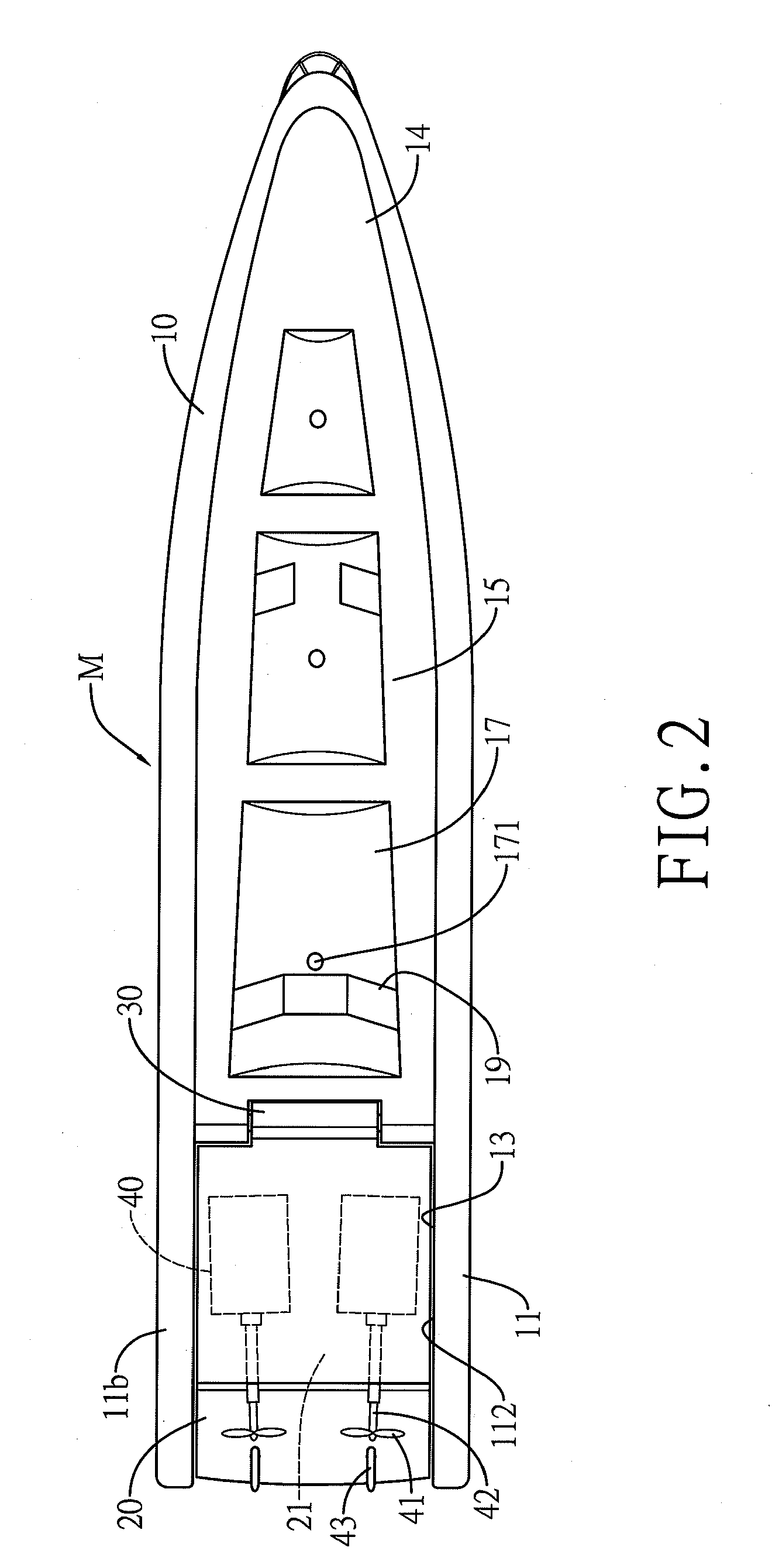Ship hull structure and a method of operating the ship
a technology of hull structure and hull structure, applied in the field of ships, can solve the problems of indecent looking at and danger, and achieve the effects of reducing the viscosity force in water, increasing propulsion, and rapid gliding speed
- Summary
- Abstract
- Description
- Claims
- Application Information
AI Technical Summary
Benefits of technology
Problems solved by technology
Method used
Image
Examples
Embodiment Construction
[0022]FIG. 1 shows a side view of implementation configuration that a ship hull structure of the present invention is applied to a yacht, FIG. 2 shows a bottom view of the ship in FIG. 1, and FIG. 3 shows a schematic view of a stern of the ship in FIG. 1
[0023]Referring to FIGS. 1 to 3, a ship M of the present invention comprises a main hull 10 and a rearbody 20 which is connected at a stern portion 11 of the main hull 10 by a hinge coupling device (or briefly called a hinge device) 30 that the rearbody 20 can move upward and downward with respect to the main hull 10.
[0024]An interior of the main hull 10 is provided with cabins and refrigerators (not shown in the drawings) which are required in an ordinary ship. The stern portion 11 is formed with a cavity portion 13 which is extended from a stern end toward a bow. A close-end wall of this cavity portion 13 is a rear wall 111 of a stern cabin 11a, and two side walls are two opposite side walls 112 of two side cabins 11b, extended fro...
PUM
 Login to View More
Login to View More Abstract
Description
Claims
Application Information
 Login to View More
Login to View More - R&D
- Intellectual Property
- Life Sciences
- Materials
- Tech Scout
- Unparalleled Data Quality
- Higher Quality Content
- 60% Fewer Hallucinations
Browse by: Latest US Patents, China's latest patents, Technical Efficacy Thesaurus, Application Domain, Technology Topic, Popular Technical Reports.
© 2025 PatSnap. All rights reserved.Legal|Privacy policy|Modern Slavery Act Transparency Statement|Sitemap|About US| Contact US: help@patsnap.com



